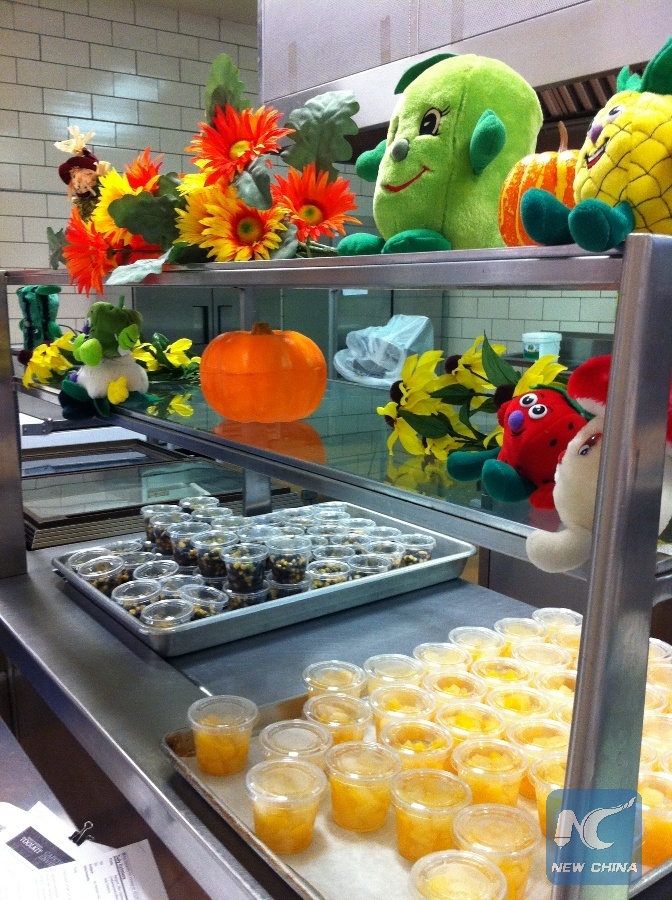
Nutrition education plus cafeteria changes leads kids to healthier eating. School lunch display (courtesy of OSU)
A child receives food from Vancouver Mayor Gregor Robertson at the Strathcona Community Center in Vancouver, Canada, Sept. 13, 2016. Vancouver Mayor Gregor Robertson joined volunteers to help distribute free breakfast to local kids from low income families. (Xinhua/Liang Sen)
SAN FRANCISCO, Sept. 14 (Xinhua) -- A news study indicates that an integrated approach to child nutrition in schools, namely nutrition education and simple changes in cafeterias, could lead children to healthier eating choices.
The study, published in the Journal of School Health, involved one group of students who received classroom nutrition education as well as the cafeteria intervention program, another group who received only the cafeteria intervention, and the third group who did not receive either component of the program.
"They are all low-cost behavioral nudges, such as placing healthy food items at the front of the cafeteria line, using verbal prompts to encourage children to try something new, or posting fun facts about the healthy food items," said Stephanie Grutzmacher, an assistant professor of nutrition in the College of Public Health and Human Sciences at Oregon State University (OSU), who led the study while on the faculty at the University of Maryland.
For the cafeteria intervention, Grutzmacher and co-authors Hee-Jung Song of the University of Maryland and Ashley L. Munger of California State University, Los Angeles, developed a toolkit of tips and ideas for cafeteria workers as well as training food service supervisors and staff to implement suggested changes. They focused on small changes that might encourage students to make healthier food choices and encouraged cafeteria workers to evaluate their environments and pick a few changes that made the most sense in their school.
Asking things such as "Which fruit would you like: apples or peaches?" instead of "Would you like a fruit?" might help encourage the children to make a healthier choice, Grutzmacher was quoted as explaining by an OSU news release, adding that "we developed about 100 ideas for elementary school cafeterias, knowing that not all of the ideas were going to work in all of the cafeterias."
The classroom education included visits by trained nutrition educators as well as teacher training and lessons designed to integrate other school lessons, including math skills, writing prompts and reading, for the classroom teacher to use.
Students reported their healthy food intake, including fruit and vegetable consumption, on a daily and weekly basis.
While some improvements in healthy eating were found among students who received the cafeteria intervention, a larger improvement was found among the children who received both the classroom education program and the cafeteria changes, resulting in eating more fruits and vegetables and enjoying foods such as whole grain pasta.
The findings support the ongoing "smarter lunchroom" movement, which aims to to encourage kids to make better food choices through subtle changes in the cafeteria, said Grutzmacher, and it supports the researchers' belief that programs that address both individual and environmental factors may be most effective in improving children's diets.
"Vegetable consumption typically declines over time in school cafeterias," Grutzmacher said. "It is pretty rare to find kids who are still choosing vegetables by the fifth grade. With this program, we saw an increase in vegetable consumption among these kids."
In face of a child obesity epidemic across the United States, she acknowledged that "we need more research but we think that integrating these approaches is a good idea."

